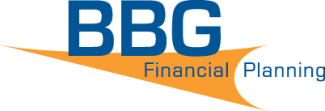Financial Aid? Hmmmmmm
By Lisa Toews-Daugherty
Financial Aid? Hmmmmm
August 2018
Our family has reached a milestone - our oldest daughter is heading off to college. We survived the stressful application process, anxious waiting period, shouts of excitement and tears of disappointment. Now, the decision is made and it’s time to get real and figure out how we are going to pay the tuition.
I’d like to say that we received financial aid; we did not. I felt, still feel, a little cheated. Everywhere there are articles that say no one pays sticker price for college. I read them all and tried negotiating, but to no avail. So here we are facing the full rate. How did we get here?
Every October the federal government releases the Free Application for Federal Student Aid (referred to as the FAFSA). Using tax data from the prior year, you provide your assets, investments, etc. The formula sums your assessable assets, looks at the age of the parents, and applies a factor to how much they think you can contribute towards tuition – called your Expected Family Contribution (EFC). Our EFC was calculated at more than our annual income! Yes, you read that right.
Some schools also require the CollegeBoard CSS Profile. You provide additional information, pay a processing fee, cross your fingers, and wait. Each school then massages the EFC and other data in mysterious, unexplained ways to give you a needs-based financial aid offer. It can include outright grants, scholarships, work study, and loans. There is no consistency across schools and financial aid packages can vary widely.
At the beginning of the process we were cautiously optimistic that some financial aid would come our way. It was sobering by the end. Could we have done anything to lower our expected family contribution? The trick is to both lower income and have non-assessable assets. A non-assessable asset is one that you cannot easily access to pay tuition (or other expenses for that matter). There are trusts, annuities, gifts, IRAs, wrap around 401k plans, charitable accounts – which can be useful in certain situations to shelter assets if you have the time and resources to implement them.
For grins you can complete the FAFSA now. Knowing what your EFC would be now will inform how aggressive you can be in realistically lowering that number. If you are like me and financial aid seems unlikely, then taking advantage of a 529 College Savings Plan is even more important. Everyone qualifies. Thankfully, my husband and I have been saving in a 529 Plan since our daughter was born. The contributions were state tax-deductible (Virginia) and it has been growing federal and state tax deferred. It will help cover her college expenses in a meaningful way. Good luck – and please call us if you want our help! I am always happy to share my experiences.

